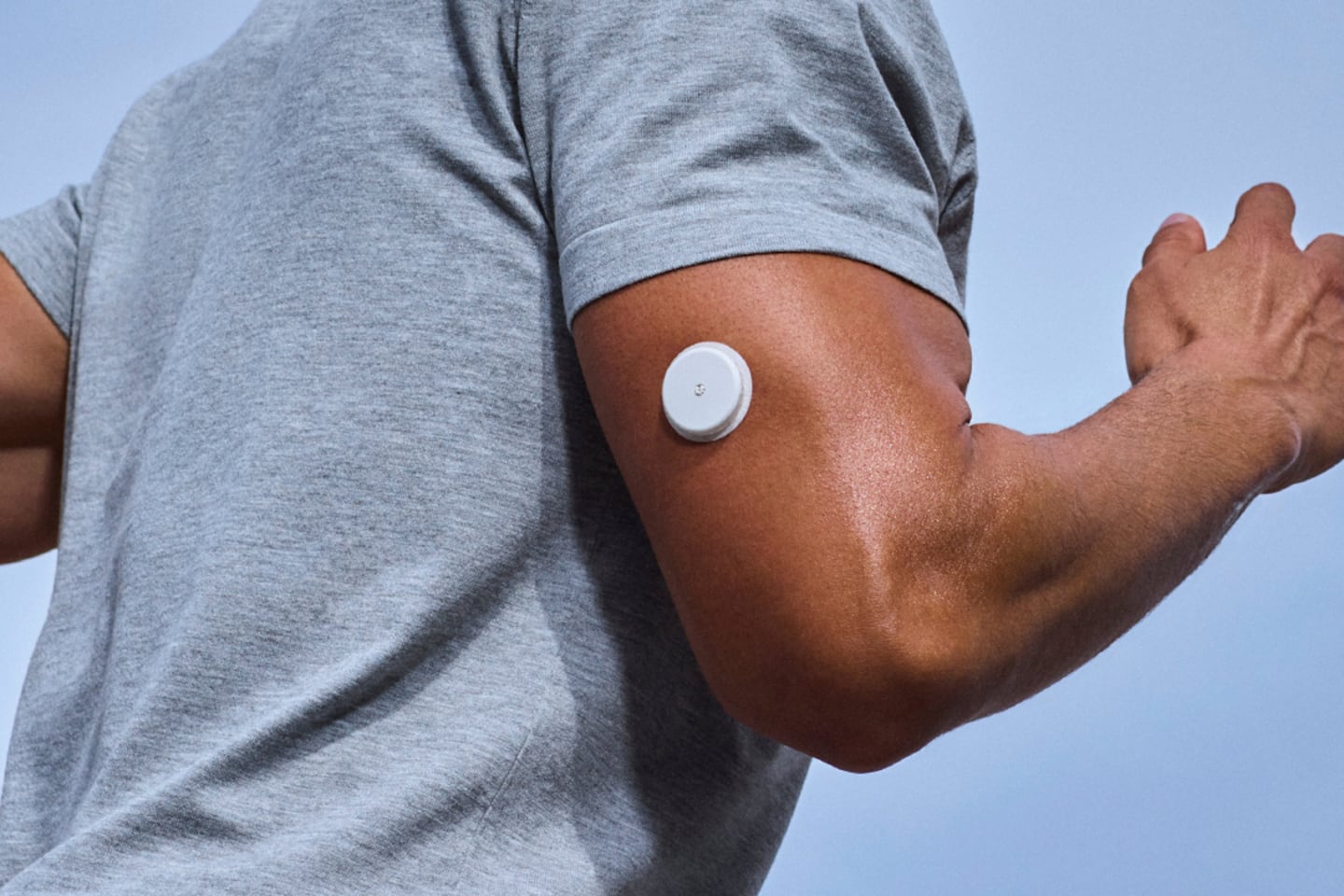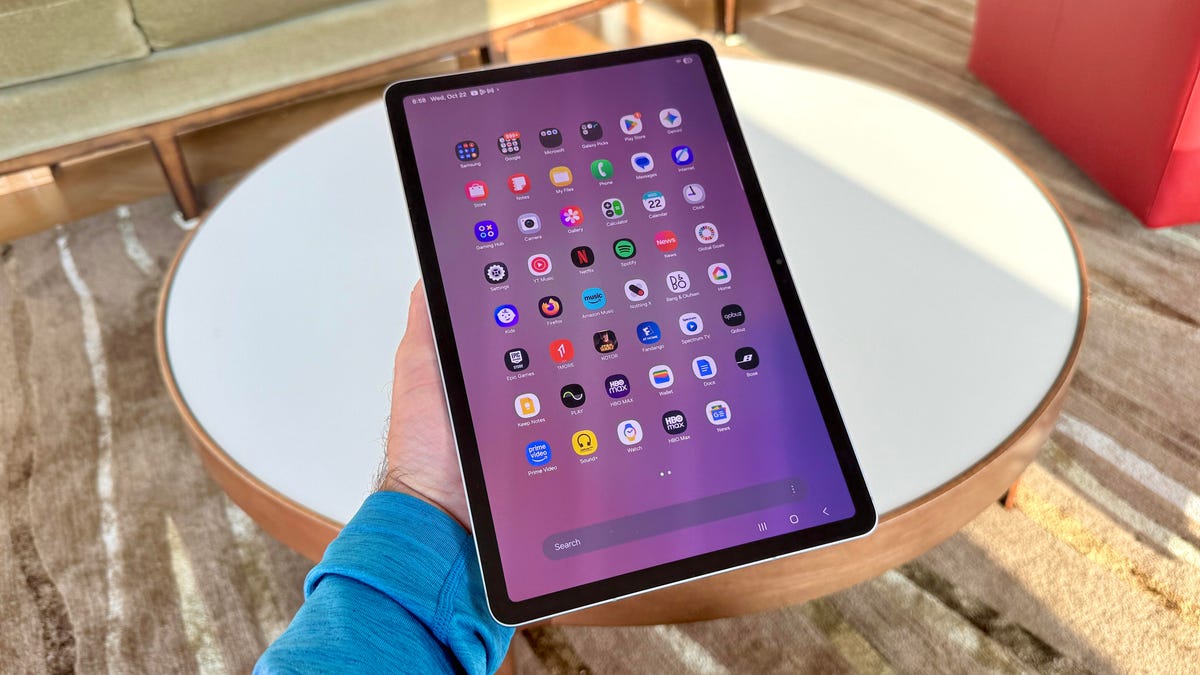“I noticed spikes in my blood sugar cause crashes and really impacted my mood. It changed how I started my day, because what I eat at 11 a.m. affects how I feel at 7 p.m.,” said Berardi, 43.
Continuous glucose monitors have become hugely popular and a billion-dollar business. While still a small percent of the overall market, the over-the-counter segment is nonetheless expected to grow to $2 billion by 2034, from $370 million in 2024, according to research firm Global Market Insights.
Brand leaders such as Stelo from Dexcom and Lingo from Abbott are sold over the counter for adults not using insulin for about $80 each, or less with subscriptions.
Devices typically last about 2 weeks, and a subscription can cover replacements as well as access to data and other analysis through a mobile app. Costs vary depending on the length of the subscription; Abbott, for example, advertises a 12-week Lingo plan for $249.
New brands targeting weight-loss monitors, such as Signos, offer promotions that include a subscription, two devices, and the mobile app for $130 a month.
Yet despite their widespread use, researchers have only a limited understanding of how they might benefit people without diabetes. Proponents say the monitors can help people make healthier lifestyle choices. But some experts caution that without more thorough vetting, the data can be misinterpreted and should not be used as a replacement for the routine pre-diabetic screening doctors perform at annual exams.
A new study from researchers at Mass General Brigham suggests that the usefulness of continuous glucose monitors in tracking blood sugar varies depending on a person’s level of diabetes risk.
The team examined how a lab test, hemoglobin A1c, which measures average blood sugar over several months, compared with eight different measures from glucose monitors, which record blood sugar levels every 5 minutes.
Researchers analyzed data from nearly 1,000 adults ages 40 or older, including those with and without diabetes. The data was provided by patients who wore the G6 monitor from Dexcom.
Participants’ readings for type 2 diabetes closely matched their A1c test results. However, the correlation was weaker for people with prediabetes and those with normal blood sugar, even when researchers accounted for factors such as body mass index, according to the study.
Dr. Jorge Rodriguez, a co-author of the study, hypothesized that in people without diabetes, short glucose spikes from meals don’t last long enough to affect the three-month averages of an A1c test. But among diabetics, glucose levels stay elevated longer, so data recorded by the monitors align better with A1c tests.
“As a physician, it is important to me to be able to advise all patients who may increasingly use these monitors,” said Rodriguez, an internal medicine hospitalist at Brigham and Women’s Hospital and assistant professor at Harvard Medical School. “In those without diabetes, [continuous glucose monitors] may be useful as behavioral ‘biofeedback’ tools that can provide insight into how food and activity impact real-time blood sugar levels, but they do not directly reflect longer-term blood sugar control.”
The devices, which track blood sugar through a tiny sensor placed just beneath the skin, have helped people with type 1 diabetes prevent dangerous overnight drops and improve glucose control for those who rely on insulin. About 1 in 10 Americans has diabetes, and nearly half of those with Type 1 diabetes wear a continuous glucose monitor, according to the National Institutes of Health.
Rodriguez said they launched the study last year as the FDA approved the first over-the-counter continuous glucose monitors. Around a half-dozen companies now market them, including Dexcom and Levels, which Trump’s Surgeon General co-founded. Rodriguez said there’s a need for more research into how well the devices predict someone’s risk of developing diabetes or dying of cardiovascular disease.
“These tools could still be powerful at a personalized level and add value by seeing the impact of sugar, identifying it, and helping you make different choices… like what you chose to eat for lunch,” Rodriguez said.
Sharam Fouladgar-Mercer, founder of Signos, a health platform promoted to non-diabetics, said the technology offers a glimpse into how bodies process energy and coaches people toward better health. Signos is the first over-the-counter continuous glucose monitoring system to be cleared by the FDA specifically for weight management.
“What works for one person doesn’t necessarily work for another, and the technology offered the only glimpse into how our bodies were processing the energy we intake,” said Fouladgar-Mercer, who said he was obese before using a glucose monitor. “We built a solution that helps people connect with what they eat, how they move, the way they feel with the data on the screen, so you don’t have to wait to see the number on the scale move.”
Rodriguez said rapid changes in glucose could have downstream effects on hearts and kidneys, which is “normally seen in people with diabetes, but there’s a gap in understanding how it could impact those without diabetes. There’s still research to be done,” he said.
Berardi noticed that even modest periods of movement — walking after eating — made a measurable difference in her blood sugar. But after acquiring what she called “enough insight,” she stopped using the device, citing the cost as a barrier.
“Food is so powerful, and [glucose monitors] empower people to really see how it impacts all those biomarkers,” she said.
According to the American Diabetes Association, normal blood glucose levels for an adult without diabetes are below 100 mg/dL when fasting and below 140 mg/dL two hours after meals.
Rodriguez said he and his colleagues launched a separate study with around 10 participants to extend the findings and explore if people are changing their behaviors based on the readings of their continuous glucose monitors.
Dr. Samir Malkani, an endocrinologist and diabetes specialist at UMass Memorial Medical Center, called the use of blood-sugar monitors by non-diabetics “uncharted territory.”
“Why are we so worried about people who are in the normal range? The main advantage of monitors is to flag when things are out of range,” he said.
Berardi is glad she tried the device and thinks more people will start using continuous glucose monitors to track their wellness.
“I’m happy I did because this is a proactive approach to good metabolic health, versus the reactive, symptomatic approach that I think we’re so used to,” she said.
Sarah Rahal can be reached at [email protected]. Follow her on X @SarahRahal_ or Instagram @sarah.rahal.
First Appeared on
Source link












